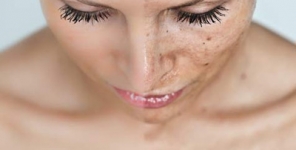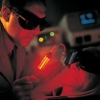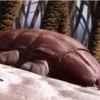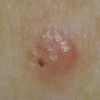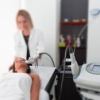Indice di melanina come valutazione dell'efficacia del laser Nd-Yag Q Switched da 1064 nm per il trattamento del nevo di Ota
 Il laser Q- switched granato di ittrio e alluminio dopato al neodimio (Q Switched Nd-Yag) è stato usato nel trattamento del nevo di Ota in tutti i tipi di pelle ottenendo un tasso di successo variabile; ma mancano ancora dati affidabili sulla base di un parametro di valutazione oggettivo.
Il laser Q- switched granato di ittrio e alluminio dopato al neodimio (Q Switched Nd-Yag) è stato usato nel trattamento del nevo di Ota in tutti i tipi di pelle ottenendo un tasso di successo variabile; ma mancano ancora dati affidabili sulla base di un parametro di valutazione oggettivo.
Obiettivo:
Studiare l'utilità dell'indice di melanina nella valutazione della risposta al trattamento e determinare anche l'efficacia e la sicurezza del laser Q Switched Nd-Yag (da 1064-nm) per il trattamento del nevo di Ota su tipi di pelle IV e V secondo Fitzpatrick.
Materiali e metodi:
Sono stati studiati 35 pazienti trattati con laser Nd-Yag. Il miglioramento oggettivo (riduzione del pigmento) è stato determinato in base all'indice di melanina in due punti fissi: A1, due centimetri sotto la pupilla a livello della linea pupillare media (con sguardo fisso); A2, la parte più prominente dello zigomo. L'indice di melanina in queste due aree è stato registrato come M1 e M2, rispettivamente. Inoltre, è stato determinato il miglioramento clinico personale attraverso il punteggio di valutazione globale del paziente e del medico.
Risultati:
Gli indici di melanina al basale M1 e M2 sono stati di 59.54 ± 9.72 e di 59.02 ± 9.16, rispettivamente. All'ultima visita, i punteggi medi M1 e M2 sono diminuiti a 53.8 ± 8.55 (P < 0.001) e a 54.13 ± 6.01 (P < 0.001), rispettivamente. Il punteggio di valutazione globale del paziente e del medico ha mostrato che 26 pazienti (74.3%) e altri 20 (57.14%), rispettivamente, hanno avuto una riduzione del pigmento > 50%.
Conclusione:
L'indice di melanina, un parametro semplice e non invasivo, si dimostra utile per valutare la risposta al trattamento in modo più obiettivo. Inoltre, il laser Q-switched Nd-Yag da 1064-nm offre un buon miglioramento nei pazienti con nevo di Ota e tipi di pelle IV/V.
Storia della pubblicazione:
Titolo: Melanin index in assessing the treatment efficacy of 1064 nm Q switched Nd-Yag laser in nevus of Ota
Rivista: Journal of Cutaneous and Aesthetic Surgery
Autori: Gomathy Sethuraman, Vinod K Sharma, Vishnubhatla Sreenivas
Affiliazioni:Department of Dermatology, All India Institute of Medical Sciences, New Delhi, India Department of Biostatistics, All India Institute of Medical Sciences, New Delhi, India
Abstract:
Background: Q- switched neodymium-yttrium aluminium-garnet (Q switched Nd-Yag) laser has been used in the treatment of nevus of Ota in all skin types with variable success rate. Data with an objective assessment parameter to this laser treatment is lacking. Objective: To evaluate the utility of melanin index in assessing the treatment response and also determine the efficacy and safety of the Q-switched Nd-Yag laser (1064- nm) in the treatment of nevus of Ota in Fitzpatrick skin types IV and V. Materials and Methods: A total of 35 patients treated with Nd-Yag laser were studied. The objective improvement (pigment clearance) was determined by melanin index from two fixed points: A1, 2 cm below the pupil at the mid pupillary line (when the gaze is fixed); A2, the most prominent part of zygoma. The melanin index in these two areas was recorded as M1 and M2, respectively. The subjective clinical improvement was determined by the physician and the patient global assessment score. Results: The mean baseline melanin indices M1 and M2 were 59.54 ± 9.72 and 59.02 ± 9.16, respectively. At the last visit the mean M1 and M2 decreased to 53.8 ± 8.55 (P < 0.001) and 54.13 ± 6.01 (P < 0.001), respectively. Patient and the physician global assessment score showed that 26 (74.3%) and 20 (57.14%) patients, respectively, had >50% pigment clearance. Conclusion: The melanin index, a simple non-invasive parameter is useful in assessing the treatment response more objectively. The 1064-nm Q-switched Nd-Yag laser offers good improvement in patients with nevus of Ota in darker skin types IV/V.
